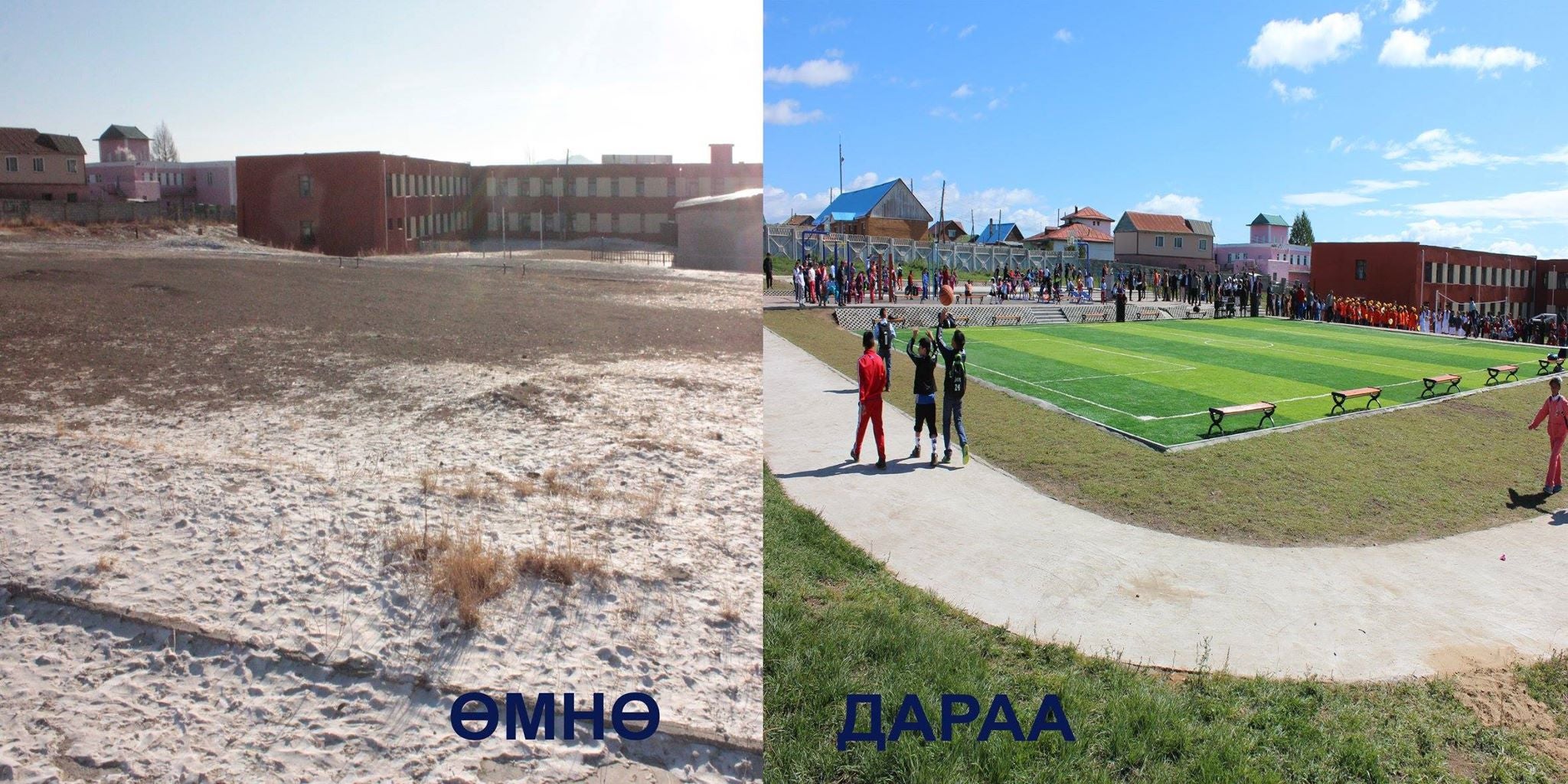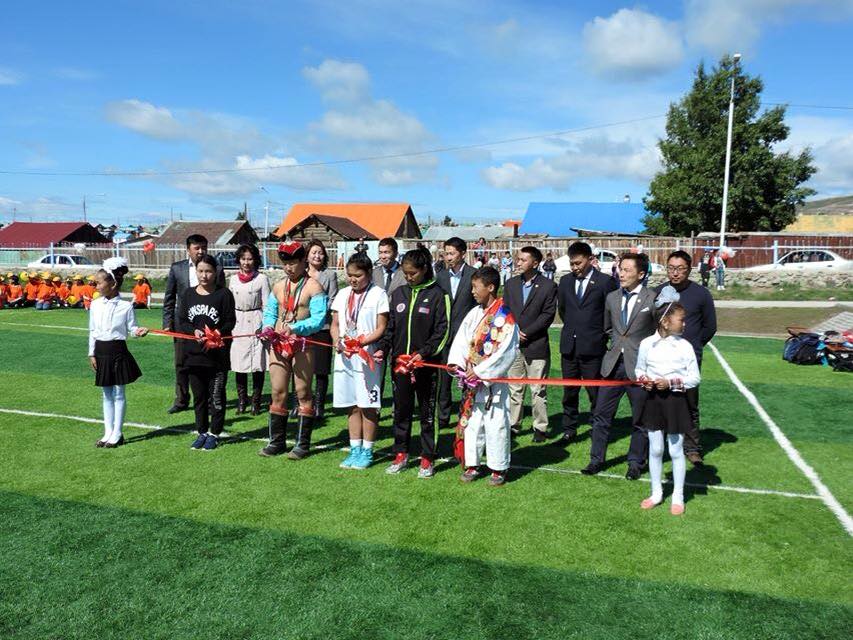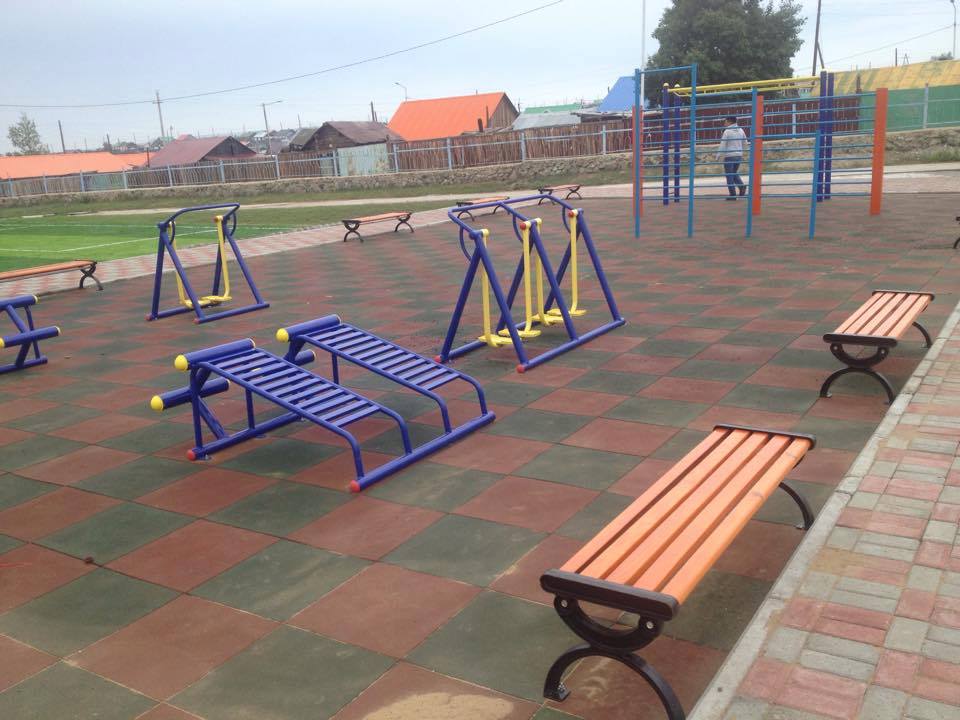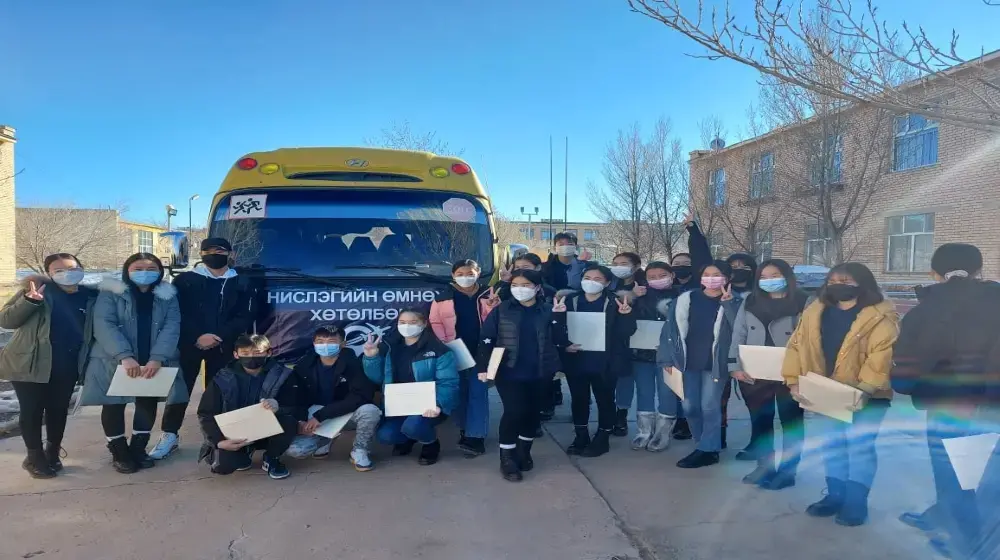A look at UNFPA Mongolia’s submission to UNFPA “Good Practice in Advocacy and Policy Dialogue” competition, one of the 10 semi-finalists from a record 66 entries of Good Practices.
UNFPA is a learning organisation and takes global lessons learned very seriously. So, we look to “Good Practices” as a benchmark or reference drawn from the experience of our colleagues in the world, in order to learn about approaches that help promote the best results, and to find inspiration in the success of our peers. UNFPA Mongolia recently participated in the international “Good Practice in Advocacy and Policy Dialogue” competition within the organization and Mongolia’s Good Practice case study from Orkhon province was one of the 10 semi-finalists. There we find the successful results of a youth-led initiative which achieved the extraordinary feat of raising USD 70,000, allocated from local development funds, to improve a playground and sports field and to ultimately better serve the community.
From YDC Workshops to Advocacy in Action
The success story begins in 2014- 2015 when the Youth Development Programme (YDP), as jointly financed by Swiss Development Cooperation, the Government of Luxembourg, Oyu Tolgoi and UNFPA, organized workshops to develop young people’s advocacy skills. Following those YDP workshops on advocacy approaches and techniques, a proposal competition was organised, which would award 700 USD to the best proposal to advocate for the improvement of their communities.

The youth of the YDC in Orkhon then came together to discuss and agree on what they think is a priority for the development of their community. They unanimously agreed that the schools in the poorer, lower income ger areas would deserve much more attention, requiring modern sports and playground facilities in comparison to other schools. They were clearly under-served, compared to those in higher-income neighbourhoods. Young people in Orkhon also saw that the most marginalized children and youth in these areas had only dirt fields in which to play. They said to themselves, “Something must be done,” and agreed to improve on the playground and lobby for the establishment of a soccer field, a basketball court, and a modern sports track field specifically at Naran school, located in one of the poorest communities in Orkhon.
What is amazing is that Orkhon youth didn’t end just in agreeing on the problem identification, but they went further by taking concrete actions to advocate for funding from the local Citizens’ Khural (the sub-provincial level parliament). “YDC staff and a youth panel established a working group at the school, and organized a meeting with school teachers and students to introduce the concept of advocacy, as well as a workshop on participation in preparation for the joint advocacy,” UNFPA Mongolia narrates in their Good Practice submission.

With a comprehensive proposal outlining their plans for an advocacy campaign aimed at local decision makers to allocate local development funds towards improvements for the Naran School playground and sports field, the Orkhon YDC won the USD 700 prize.
A Hundred Times Return on Investment
“With the small grant, Orkhon YDC initiated a community mobilization campaign to support their advocacy efforts, in which young people, teachers, students and influential members in the community contributed hundreds of signatures, and sent text messages to the governor of the sub-province where the school is located, its 31 members of the local Citizens’ Khural and the heads of the City Council, making an even more powerful case for their appeal. Citizens’ requests were also reinforced through the province and sub-province citizens’ feedback hotlines. YDC staff and youth panel members also appealed to local decision makers directly, including young members of the local Citizens’ Khural, to answer questions, strengthen their case, build support and enhance their proposal. The YDC collaborated with a local TV to air promotional videos and advertisements about their initiative and garner public support. The videos and ads were broadcast through local TV stations, Facebook and social media. When the proposal finally reached the local Citizens’ Khural during its annual budget allocation session of the local development fund, it had overwhelming support from local decision-makers.”, reports UNFPA Mongolia.
As a result of this advocacy campaign, the overwhelming majority of the Citizens’ Khural of the Bayan-Undur sub-province of Orkhon province voted to allocate a portion of the local development funds to the initiative presented by the Orkhon YDC. They dedicated MNT 132,800,000 (USD 70,000) in funding for the Naran school’s outdoor sports field and playground, “an unprecedented 100 times return on investment from the initial 700 USD prize for the advocacy campaign.” The Naran School’s new sports field and playground was officially opened on September 11, 2015, serving the young people living in this poor urban community.
Successful outcomes and learnings
Revisiting this case has helped us all affirm that the Youth Development Centers - with its participatory governance principles and structures centred on young people themselves from diverse backgrounds and its life skills training opportunities - is a model which works. It was the initiative proposed by young people themselves, fully owned and implemented by them, and impressive results achieved by them. It was proof that working with a diverse mix of committed youth can yieldd remarkable results. In this case, some were already established youth leaders in the community while others, who were from more marginalized backgrounds, did not have the same skills necessary to participate in decision making. But with the life skills building workshops, training in critical thinking, self-esteem, and emotional control available at the YDCs, they all worked together as a team, and all these youths from diverse circumstances were able to participate together in the processes that helped bring positive change to their community.

We analyse that the campaign was successful because of: (1) effective training on advocacy and youth participation in the community, where a handbook on advocacy was provided; (2) development of a concrete action plan to conduct local advocacy by young people themselves in Orkhon; (3) organizing a small grants competition that further pushed the young people to learn and improve their understanding in order to develop a competitive proposal; and (4) once the proposal was awarded, continuous advice and guidance provided on the organisation of advocacy until its fruition.
Young people are the positive force for change in the development of the country. They have good and innovative ideas, high energy and spirits, and strong commitment to make their own communities and country much more successful.
It is thus essential that young people fully participate in development work, so that their potential is fully fulfilled!
Related links:
https://www.youtube.com/watch?v=dVYHRJWr1-Q&feature=youtu.be
https://www.youtube.com/watch?v=dVYHRJWr1-Q&feature=youtu.be
https://www.youtube.com/watch?v=HREZrK99UZQ&feature=youtu.be
By: A.Esguerra based on orginal document by BAttuya Khurlee and Emma Dunkley-Elliot



